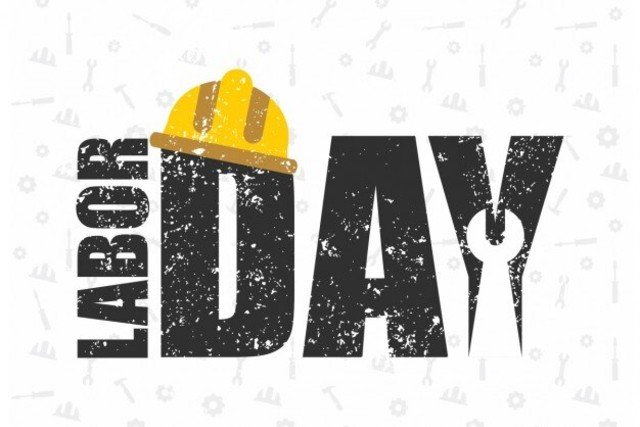Labor Day 2025 falls on Monday, September 1. This annual observance, held on the first Monday of September, honors the contributions of American workers to the nation’s strength and prosperity. Understanding the origins, significance, and contemporary celebrations of Labor Day offers insight into its enduring importance in the United States.
Origins of Labor Day
The late 19th century was a period of significant industrial growth in the United States, accompanied by challenging working conditions, long hours, and minimal labor regulations. In response, labor unions and activists advocated for better working conditions and the recognition of workers’ contributions. This movement led to the establishment of Labor Day as a national holiday.
The first Labor Day celebration occurred on September 5, 1882, in New York City, organized by the Central Labor Union. The event featured a parade and festivities to acknowledge the achievements of workers. As the idea gained momentum, other cities and states adopted similar celebrations. In 1887, Oregon became the first state to legislate Labor Day as a public holiday. The federal government followed suit in 1894, declaring the first Monday in September a national holiday dedicated to workers.
Significance of Labor Day
Labor Day serves as a tribute to the social and economic achievements of American workers. It recognizes the labor movement’s role in securing rights such as fair wages, reasonable working hours, and safe working conditions. The holiday also underscores the importance of workers in building and sustaining the nation’s economy.
Beyond its historical roots, Labor Day marks the unofficial end of summer. It is a time for individuals and families to enjoy a long weekend before the transition into the fall season. This aspect of the holiday has contributed to various cultural traditions and activities associated with Labor Day.
Contemporary Observances and Traditions
Labor Day is celebrated across the United States with a variety of events and customs that reflect both its historical significance and its role as a seasonal milestone.
Parades and Public Events
Many communities host parades featuring workers, unions, and local organizations. These events serve as a public acknowledgment of the contributions of laborers and often include speeches, music, and other festivities. Cities such as New York and Chicago are known for their extensive Labor Day parades.
Recreational Activities
Given its timing at the end of summer, Labor Day weekend is popular for outdoor activities. Families and friends often gather for picnics, barbecues, and sporting events. Parks, beaches, and other recreational areas see increased attendance as people take advantage of the long weekend.
Retail Sales
Labor Day has also become associated with significant retail sales. Many businesses offer discounts and promotions, making it a notable shopping period. Consumers often take advantage of these sales for back-to-school shopping and other needs.
Sports Events
The holiday weekend traditionally marks the beginning of the college football season. Fans eagerly anticipate kickoff games, and many schools host special events and matches during this time. Additionally, the U.S. Open Tennis Championships often coincide with Labor Day weekend, attracting sports enthusiasts nationwide.
Planning for Labor Day 2025
With Labor Day 2025 set for September 1, individuals and families can plan various activities to commemorate the holiday. Whether participating in community events, organizing gatherings, or simply enjoying a day of rest, the holiday offers an opportunity to reflect on the value of labor and the contributions of workers.
Travel Considerations
Labor Day weekend is a popular time for travel, leading to increased demand for transportation and accommodations. Those planning trips should consider booking in advance to secure preferred options and potentially benefit from early booking discounts.
Maximizing Time Off
For many, Labor Day provides a chance to extend time off by combining the holiday with additional vacation days. Strategically planning around the holiday can result in a longer break without using excessive leave. For example, taking the Friday before Labor Day off can create a four-day weekend, allowing for more extensive travel or relaxation.
The Evolving Significance of Labor Day
While Labor Day continues to honor the contributions of workers, its observance has evolved over time. In recent years, there has been a renewed focus on labor rights and the importance of fair working conditions. Discussions around topics such as work-life balance, equitable pay, and workers’ rights have brought attention back to the holiday’s original intent.
Moreover, as the nature of work changes with advancements in technology and shifts in the economy, Labor Day serves as a reminder of the ongoing need to recognize and support the workforce. It prompts reflection on how labor practices can adapt to meet the needs of both employers and employees in a changing landscape.
Conclusion
Labor Day 2025, observed on September 1, offers an opportunity to honor the enduring contributions of American workers. Rooted in a rich history of labor activism and achievement, the holiday serves as both a celebration of past accomplishments and a reminder of the ongoing importance of fair and equitable labor practices. Whether through participation in traditional events, personal reflection, or simply enjoying the company of loved ones, Labor Day remains a significant and cherished observance in the United States.




